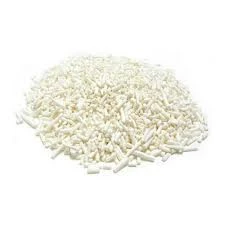
e473 emulsifier
Understanding E473 Emulsifier in Food Technology
In the realm of food technology, emulsifiers play a critical role in ensuring the stability, texture, and shelf-life of various food products. Among the many emulsifiers used in the industry, E473, also known as Sucrose Esters of Fatty Acids, has gained significant attention due to its multifunctional properties and versatility.
E473 is derived from the esterification of sucrose—an organic compound found in many plants—and fatty acids, which are essential components of fats and oils. This unique combination creates a compound that can effectively reduce surface tension, allowing for the even distribution of fat and water phases in food products. As a result, E473 is commonly used in a variety of food applications, including baked goods, dairy products, sauces, and dressings.
Functionality of E473
One of the primary functions of E473 as an emulsifier is to promote the blending of oil and water. In many food products, these two components do not naturally mix, leading to separation and an undesirable texture. By incorporating E473, manufacturers can create stable emulsions that maintain a uniform consistency, ensuring a more appealing product.
In addition to its emulsifying properties, E473 also enhances the overall mouthfeel and texture of food. It can improve the creaminess of dairy products, contribute to the tenderness of baked goods, and provide a smooth, consistent texture in sauces and dressings. This multifaceted approach not only improves the sensory experience of consumers but also enhances the shelf-life of products by preventing separation and spoilage.
e473 emulsifier

Safety and Regulatory Status
E473 has been evaluated for safety by various regulatory bodies, including the European Food Safety Authority (EFSA) and the U.S. Food and Drug Administration (FDA). According to these organizations, E473 is considered safe for consumption in specified amounts. It is classified as a food additive under the European food additive numbering system and is allowed in many food products, provided it meets safety standards.
Despite its safety, consumers are increasingly aware of food ingredients and their potential impacts on health. There has been a growing trend toward cleaner labels and minimizing the use of artificial additives. In response, many food manufacturers have begun exploring natural alternatives or limiting the quantities of emulsifiers like E473 in their products. However, the stability and functionality that E473 provides often make it a valuable addition to many formulations.
Conclusion
E473, or Sucrose Esters of Fatty Acids, represents a significant advancement in food technology, serving as a crucial emulsifier that enhances the quality, texture, and longevity of food products. Its ability to promote stability in emulsions has made it a popular choice among food manufacturers, while its regulatory approval underscores its safety for consumer consumption. As the food industry evolves, the challenge will be to balance the functional benefits of emulsifiers like E473 with the growing demand for natural and minimally processed ingredients. This ongoing dialogue will shape the future of food formulation, influencing how products are developed and marketed to consumers worldwide.
-
Pure Sodium Dichloroisocyanurate Dihydrate | Powerful DisinfectantNewsAug.29,2025
-
Industrial Chemicals: Quality & Purity for Every IndustryNewsAug.28,2025
-
Nitrile Rubber Honoring Strict Production StandardsNewsAug.22,2025
-
Aspartame Ingredients Honoring Food Safety ValuesNewsAug.22,2025
-
Fertilizer for Balanced Plant NutritionNewsAug.22,2025
-
Cyanide Gold Processing with High Purity AdditivesNewsAug.22,2025
-
Formic Acid in Textile Dyeing ApplicationsNewsAug.22,2025
Hebei Tenger Chemical Technology Co., Ltd. focuses on the chemical industry and is committed to the export service of chemical raw materials.
-

view more DiethanolisopropanolamineIn the ever-growing field of chemical solutions, diethanolisopropanolamine (DEIPA) stands out as a versatile and important compound. Due to its unique chemical structure and properties, DEIPA is of interest to various industries including construction, personal care, and agriculture. -

view more TriisopropanolamineTriisopropanolamine (TIPA) alkanol amine substance, is a kind of alcohol amine compound with amino and alcohol hydroxyl, and because of its molecules contains both amino and hydroxyl. -

view more Tetramethyl Thiuram DisulfideTetramethyl thiuram disulfide, also known as TMTD, is a white to light-yellow powder with a distinct sulfur-like odor. It is soluble in organic solvents such as benzene, acetone, and ethyl acetate, making it highly versatile for use in different formulations. TMTD is known for its excellent vulcanization acceleration properties, which makes it a key ingredient in the production of rubber products. Additionally, it acts as an effective fungicide and bactericide, making it valuable in agricultural applications. Its high purity and stability ensure consistent performance, making it a preferred choice for manufacturers across various industries.





